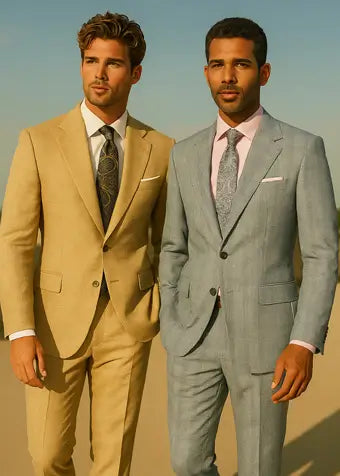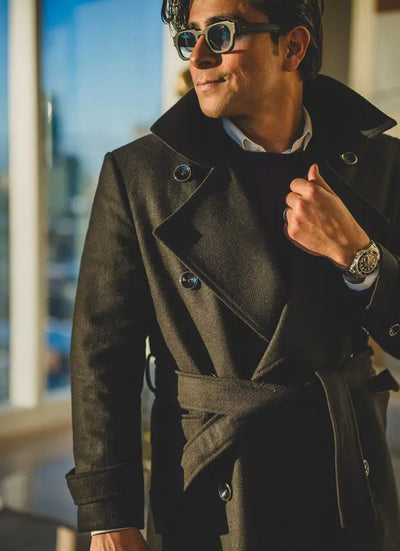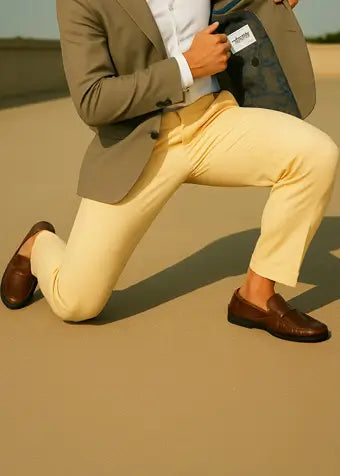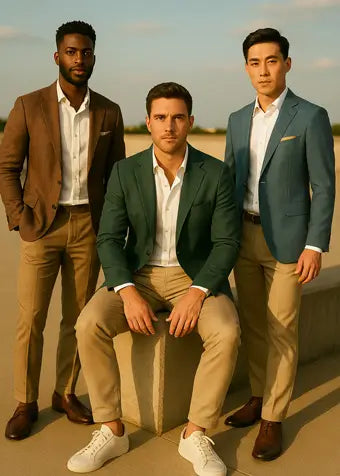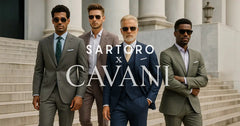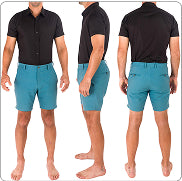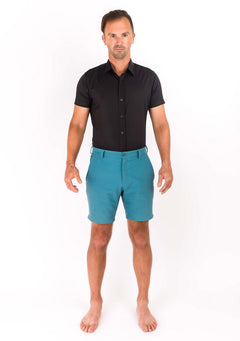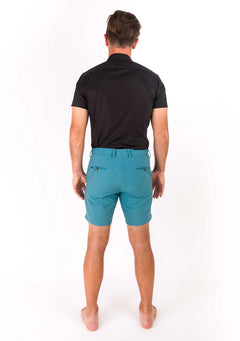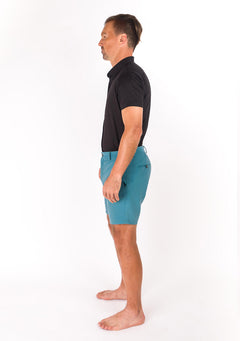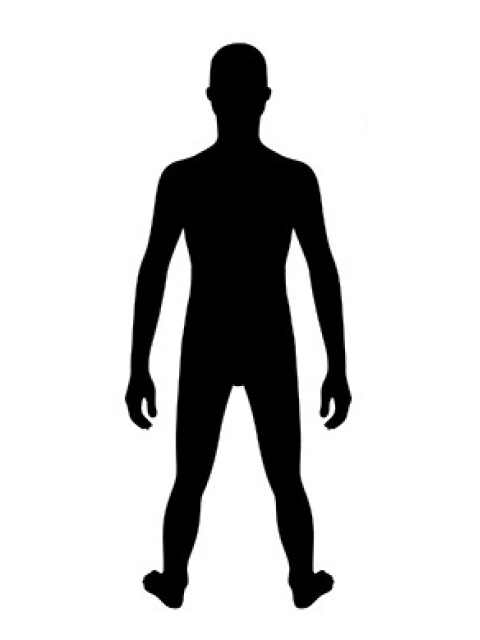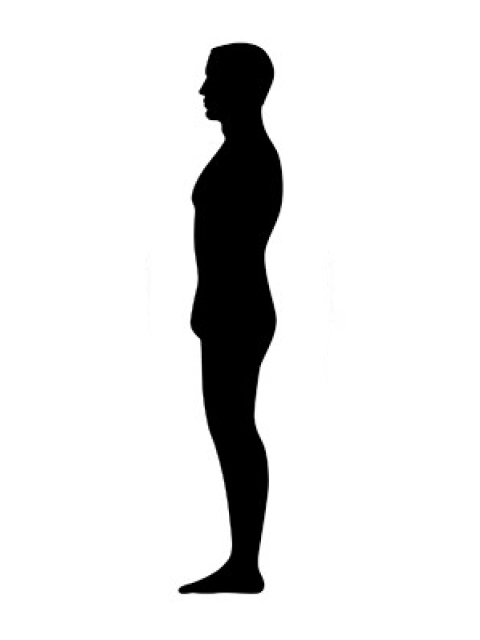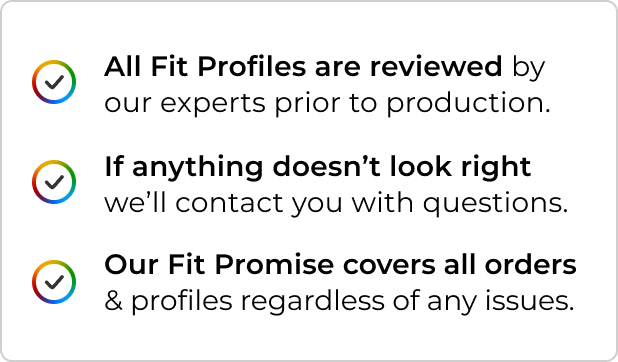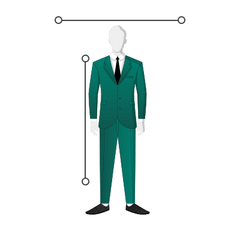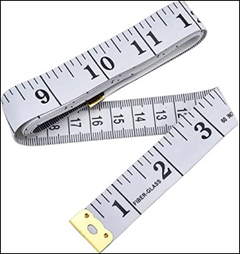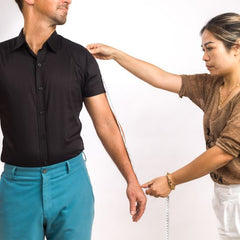Suit Colors: Choosing The Best Shade For Every Occasion

Key Takeaways:
- Suit Colors Matter For First Impressions: Darker shades like navy and charcoal convey professionalism, while lighter colors add personality and can suit both casual and formal events, depending on the context.
- Consider Skin Tone And Occasion: To look your best, choose suit colors that complement your skin tone and fit the occasion. Navy and charcoal are great for formal settings, while lighter shades or bolder colors are perfect for casual or creative environments.
- Build A Versatile Suit Wardrobe: Invest in timeless colors like navy, charcoal, and grey for a flexible wardrobe while adding unique colors like olive or burgundy for added personality to dress for every occasion.
Choosing the right suit color can seem like a small detail, but it speaks volumes. You want to look sharp, confident, and put-together without overthinking it. Whether you're dressing for a big presentation, a wedding, or a night out, the right shade should make you feel at ease and ready for whatever the occasion brings.
You don't need a closet full of suits to achieve this; a few well-chosen colors are all you need to cover every scenario, from business to casual. We aim to help you feel comfortable and stylish, no matter the event. Think modern, laid-back sophistication that fits seamlessly into your life and style. With our guide, you'll learn how to pick a suit color that works for you and get the most out of your wardrobe without the stress.
Why Suit Colors Matter: Making The Right Choice For Every Occasion
Understanding the significance of suit colors cannot be overstated when considering bespoke tailoring. The color of your suit plays a pivotal role in complementing your style and ensuring you are dressed appropriately for the occasion. It goes beyond mere aesthetics; it's about making a statement, evoking the right emotions, and creating lasting impressions.
First Impressions Count
When you step into a room, your suit is often the first thing people notice. A carefully chosen suit color helps you make an immediate, positive impression. Darker colors like navy or charcoal are seen as professional and trustworthy, while lighter shades like grey, beige, or a lighter blue can suggest a more relaxed and approachable vibe. The right color fits the occasion and complements your personality, signaling to others that you're confident, prepared, and aware of the social dynamics around you.
Highlighting Personal Style
Suit colors are also an expression of your personal style. While traditional dark suits are timeless, adding color or pattern can create a unique and modern look. A deep burgundy or a bold checkered pattern signals confidence and a willingness to stand out, while classic colors offer a more refined approach. Whether you're drawn to rich blues, subtle greys, or trendy hues, your suit color helps you convey your identity without saying a word.
Versatility And Wardrobe Efficiency
Choosing the right colors allows you to wear your suit for various occasions, maximizing the value of your investment. A navy suit can transition from a corporate meeting to a dinner date, while a charcoal grey suit can easily be dressed up or down with different accessories or shirts. A versatile suit wardrobe—carefully curated with various colors—means you don’t have to overthink what to wear. The flexibility of neutral shades like grey, black, or blue makes them easy to pair with various shirts, ties, and shoes.
Emotional Impact And Psychology
The color of your suit can affect how others perceive you and how you feel. For example, navy blue is often associated with authority and trustworthiness, making it ideal for job interviews or important meetings. On the other hand, lighter colors like grey or beige can invoke feelings of calmness and approachability, which can be great for social events or networking. Understanding the psychology of colors can help you choose a suit that puts you in the right mindset for any situation.
Sartoro makes finding the perfect suit color effortless. Whether you're aiming for a sharp, professional look or something more laid-back, we’ve got the right shades to match every occasion. Explore our collection and find the perfect suit color that reflects your style and ensures you’re always dressed to impress.
How To Choose The Perfect Suit Color For Your Personal Style
Choosing the perfect suit color is not just about what looks good on the rack or what is fashionable. It's about finding a shade that complements your personal style, enhances your appearance, and is appropriate for the occasion.
Consider Complexion And Contrast
Your skin's undertone determines which suit colors will make you look your best. Typically, if you have a cooler complexion, navy, black, or charcoal suit colors can create a striking contrast that highlights your features. For warmer complexions, earth tones like beige, olive, light grey, or brown can add sophistication to your look.
Reflect On The Occasion
The event you're dressing for greatly influences the suitable color choice. Traditional colors like black, navy, and dark gray project formality and professionalism, making them perfect for business meetings or formal events. Don't be afraid to express your style with lighter shades or unconventional colors like midnight blue or burgundy for more relaxed or creative settings.
Leverage The Season And Setting
The season and setting can also influence your color choice. Lighter colors work well in spring and summer, reflecting the cheerful ambiance of these seasons. In contrast, cooler months are better suited for darker colors, offering warmth and depth. Additionally, consider the setting – outdoor events might call for more vibrant or lighter shades to complement natural light, whereas indoor occasions can afford more flexibility.
Suit Colors For Every Skin Tone
Selecting the right suit colors is not just about the occasion; it's about complementing your skin tone, ensuring you look your best in comfort and style. Here's a guide to choosing suit colors that harmonize with every skin tone, ensuring you put forward your best self at any event.
For Light Skin Tones
Individuals with lighter skin tones should aim for contrast to avoid looking washed out. Darker suit colors such as navy, charcoal, or dark gray offer a striking contrast that can be very flattering. While black suits are classic, they can sometimes be too harsh for very pale skin, so considering a rich navy might be a more suitable alternative.
For Medium Skin Tones
Medium skin tones have the advantage of versatility, allowing for a broad range of suit colors. Opt for suits in shades like medium blue, lighter grays, or even earth tones such as green or brown to enhance your natural warmth. These colors complement your skin's natural undertone, making these suits a staple for professional settings and special occasions.
For Olive Skin Tones
Olive skin tones benefit from a wide palette of colors. However, to truly accentuate this skin tone's unique hue, consider wearing suits in earthy greens, deeper blues, or burgundy. These colors will highlight your skin's warm undertones, offering a distinguished look that's both timeless and elegant.
For Dark Skin Tones
Darker skin tones can carry off bold and bright colors with unparalleled elegance. Don't shy away from experimenting with vibrant shades of blue, crisp ivory, or even sophisticated patterns. Lighter colors, such as pastels or rich jewel tones, also provide a beautiful contrast that can make any outfit stand out for the right reasons.
Choosing Suit Colors For Different Occasions
The right suit color can make all the difference in how you attend an event. From corporate meetings to weddings or casual gatherings, each occasion calls for a different approach to your suit. Here’s how to choose the best color for any situation, ensuring you feel confident, comfortable, and in tune with the event’s vibe.
For Business And Professional Settings
In professional settings, classic and neutral colors such as navy, charcoal, and light grey stand out for their versatility and formality. Navy suits are a staple for the business wardrobe, emitting confidence and trust. Charcoal grey offers a highly adaptable option for important meetings and regular office days. Light grey suits, while slightly more casual, present a modern and approachable look for business casual environments.
For Weddings And Formal Events
Weddings and formal events call for a bit more flair and personality in your choice of suit color. While black remains the pinnacle of sophistication for black-tie events, exploring beyond traditional black to midnight blue or a deep, rich burgundy can add a unique touch to your formal attire, combining classic elegance with a hint of individual style.
For summer weddings or events in brighter settings, lighter shades such as beiges or pastels can offer a fresh, cheerful look suited to the occasion’s mood.
For Everyday Wear And Casual Events
The realm of casual events and daily wear allows for more creativity and personal expression in choosing suit colors. Earth tones like olive, brown, and tan are excellent for a relaxed yet refined appearance.
These colors pair beautifully with various shirt colors and accessories, allowing for versatility in your wardrobe. For a more adventurous look, subtle patterns or brighter colors like royal blue can make a strong style statement while maintaining sophistication.
Suit Colors For Work: Navigating Office Dress Codes
Understanding your office dress code is paramount when selecting a suit color. Whether your office environment is conservative, business casual, or somewhere in between, choosing the right suit color demonstrates your professionalism, attention to detail, and respect for workplace norms.
Traditional And Conservative Workplaces
Classic colors like navy, charcoal, and dark grey are staples for those working in traditional fields such as finance, law, or corporate sectors. A bespoke navy suit exudes professionalism and versatility, easily paired with various shirt and tie and pants combinations for a fresh look each day. Charcoal and dark grey suits offer a similarly professional appearance, providing a solid foundation for your work wardrobe.
Business Casual And Creative Workplaces
Another way to elevate your work wardrobe and add versatility to your suit collection is wearing suits as separates. For example, a green suit jacket can be paired with chinos to create a more casual yet stylish look.
This approach not only gives you more mileage out of your suit, but it also allows you to experiment with different combinations, enhancing the overall versatility of your wardrobe. This mix-and-match strategy can be especially useful in a business casual environment, where the goal is to maintain a professional edge while embracing a more relaxed, personal style.
For those keen to make a bolder statement while remaining appropriate for the workplace, consider adding a suit in a unique but subtle color, such as olive green or a soft plaid pattern. Personalization options allow you to maintain a professional edge with a suit that is unmistakably yours.
Understanding Your Office's Culture
Before finalizing your choice, consider your workplace's culture and unspoken rules. While experimenting with different suit colors can be refreshing, ensuring that your attire aligns with the expectations of your office is crucial. Opt for versatility and timelessness, especially when building your foundational work wardrobe.
Suit Colors For Weddings: Guest & Groom Considerations
When it comes to weddings, the right suit color can elevate your look and set the tone for the entire day. Here’s a breakdown of the best suit colors for guests and grooms, helping you choose the perfect shade for this special event.
For The Groom
The groom's suit color is pivotal in setting the tone for the wedding. Classic black remains a perennial favorite, offering a sleek and timeless look suited for evening or formal weddings. Navy blue is another popular choice, providing a slightly more relaxed yet equally sophisticated alternative.
For those looking to make more of a statement or to complement a less traditional wedding theme, lighter shades such as charcoal, light grey, or even pastel hues can be striking choices that stand out beautifully in wedding photographs.
For The Wedding Guest
As a wedding guest, the key is to select a suit color that respects the occasion while subtly standing out. It's essential to consider the time of day and the location of the wedding. Lighter suit colors, such as light grey or blue, are typically more suited to daytime or outdoor weddings. For evening or more formal weddings, darker shades such as charcoal, navy, or even a deep mulberry can add a touch of elegance.
Building A Versatile Suit Wardrobe With Color
Building a versatile suit wardrobe with color is key to maximizing your options and minimizing the need for constant new purchases. Here's how to approach it:
The Foundation:
- Navy: The most versatile color. For endless combinations, pair it with white, light blue, pink, and patterned shirts.
- Charcoal Gray: A sophisticated alternative to navy, suitable for more formal occasions.
- Light Gray: Perfect for warmer weather and offers a more relaxed look.
Strategic Additions:
- Brown: A warm and inviting option, especially for autumn and winter.
- Green: A unique and sophisticated choice that can add a touch of personality.
- Blue: Explore shades beyond navy, like light blue or royal blue, for a more vibrant look.
Mastering The Art Of Mixing & Matching:
- Jacket & Trousers: Don't always wear the jacket and trousers from the same suit. Mix and match jackets and trousers from different suits in complementary colors.
- Separate Pieces: Consider purchasing suit jackets and trousers separately to increase your options.
- Accessorize Wisely: Experiment with colored shirts, ties, pocket squares, and shoes to create unique looks.
Consider Patterns:
- Pinstripes: Add subtle visual interest to navy or gray suits.
- Checks: Offer a more casual and relaxed look.
- Subtle Patterns: Experiment with subtle patterns like herringbone or windowpane.
Quality Over Quantity:
- Invest in well-made suits: High-quality fabrics and construction will ensure your suits last longer and maintain shape.
- Proper Fit: Ensure your suits fit you well. A well-tailored suit will always look better than an ill-fitting one. By choosing a custom-made suit with a brand like Sartoro, you can ensure every detail is tailored to your specific body type, allowing you to look and feel your best regardless of your frame. Digital sizing tools like Sartoro’s Digital Tailor make customization even easier, allowing you to build your unique size and fit profile in just a few clicks.
Final Thoughts
Selecting the right suit color is more than just a matter of style; it's about making a lasting impression and feeling confident in any setting. By understanding how colors influence perception and choosing the shades that suit your complexion, occasion, and personal style, you’ll create a versatile, timeless wardrobe that works for every event. Whether you’re dressing for a professional meeting or a wedding, the right color can elevate your look and ensure you stand out for all the right reasons.
Read also:
Frequently Asked Questions About Suit Colors
Can I wear a black suit to a semi-formal event?
While a black suit can work for some semi-formal events, it’s not typically the most versatile choice. For a polished yet adaptable look, consider opting for a charcoal suit instead. Charcoal suits strike a balance between formal and approachable, making them a great option for a variety of occasions. If you’re looking to invest in one suit that works well across different settings, charcoal is a smart pick.
How do I match my suit color with the time of day?
The general guideline is to opt for lighter suit colors, such as light gray or soft blue, for daytime events, as they complement natural daylight well. For evening events, darker suit colors such as navy, charcoal, or black are preferable. These offer a more formal and sophisticated appearance under artificial or dim lighting. This approach ensures that your attire aligns with the event's ambiance and time of day.
What are the best suit colors for a first date?
For a first date, it's essential to balance looking polished and not overly formal. Mid-tone blues, soft grays, or even a subtle check or plaid pattern can convey a sense of style and effort without appearing too business-like. These colors are inviting and versatile, allowing you to feel confident making a positive first impression.
What are the rules for mixing and matching suit colors?
When mixing and matching suit colors, the key is to maintain harmony and balance in your outfit. A good rule of thumb is to choose colors that complement each other without clashing. For example, a navy suit jacket can be paired with lighter blue or gray trousers. Always ensure that the suit colors are distinctly different to avoid appearing as though you've mismatched pieces from different suits. Keeping accessories neutral or in complementary colors can also help unify the look.
How do I accessorize a brightly colored suit?
Accessorizing a brightly colored suit requires a careful approach to avoid overloading your outfit with color. Opt for neutral or muted accessories to balance the suit's vividness. White or light-colored shirts, simple ties, and classic leather shoes in black or brown can ground the outfit. When choosing accessories like pocket squares or cufflinks, select subtle patterns and tones that complement rather than compete with the suit color.
Is it acceptable to wear a colored suit for a business presentation?
Wearing a colored suit for a business presentation is acceptable, provided the color is not too vibrant or distracting. Subdued colors like deep blue, forest green, or burgundy can convey confidence and individuality while maintaining a professional appearance. It's important to consider the presentation's context and your audience's expected attire.





















